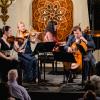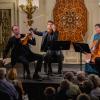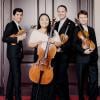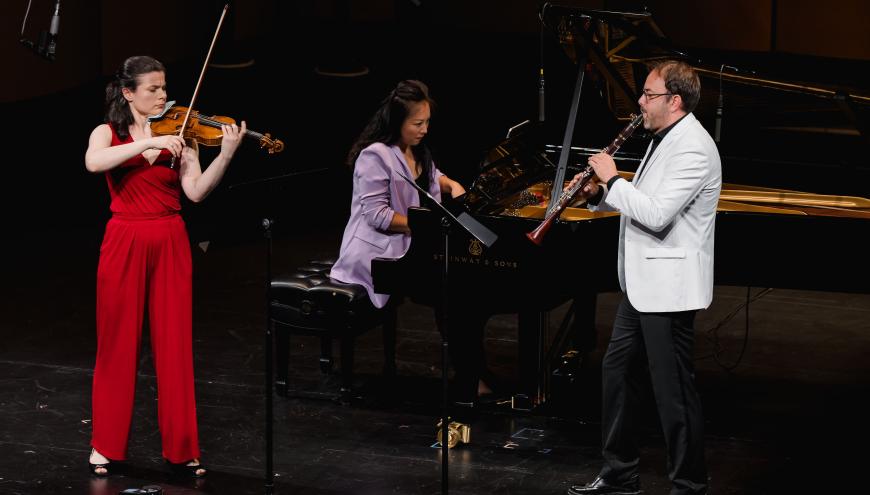
The fifth concert in Music@Menlo’s six-concert survey of chamber music history was titled “The Turbulent Century.” That’s the 20th century, of course, but the program’s view of the period was selective.
The music chosen was ingratiating or captivating, so turbulence was held down. Four of the pieces dated from between the world wars, and the fifth, from 1955, came from the Soviet bloc, where the postwar Western avant-garde had only begun to arrive at that time. Otherwise, the period from 1945–1985 was omitted, leaving this survey without a single serialist work, implying just how little lasting impact that once-ubiquitous compositional procedure has had.
Instead, the Sunday, July 30 program at the Spieker Center for the Arts had two pieces carrying on from where the Romantic movement left off; another two employing folk music, either explicitly or implicitly; and one using the forms and techniques, but not the melodic material, of the Baroque era. Whatever its status as a historical survey, the result was a delightful and intriguing listening experience.
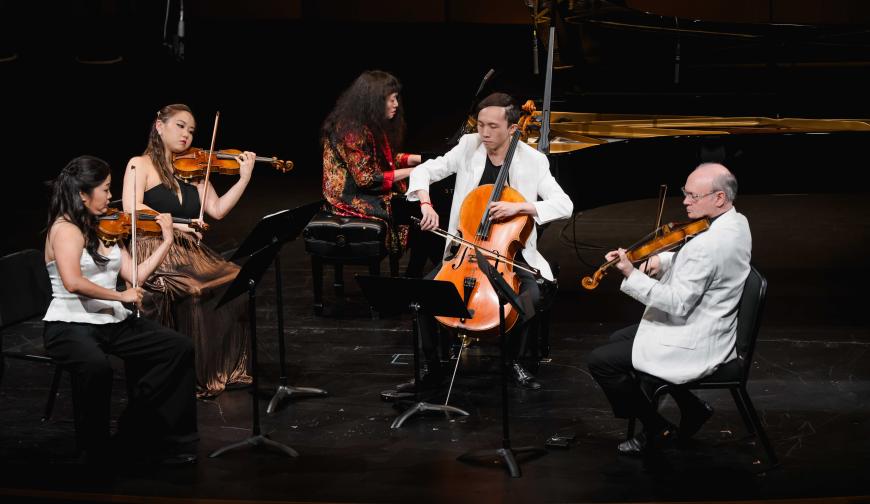
The post-Romantic offering most boldly showcasing modernistic techniques was Ernest Bloch’s Piano Quintet No. 1 from 1923. Like much of Bloch’s music for piano and strings, this quintet merges chords among the instruments for a characteristically crisp and crunchy sound. There was also much churning from the strings and, in the slow movement, lines held so tentatively that they threatened to disappear into thin air over deep chordal descents in the piano.
Echoes of Igor Stravinsky’s ballet music and premonitions of Aaron Copland’s made appearances. Quarter tones were often dropped into from the note above, producing a sound akin to the Doppler shift. Bloch uses whole-tone scales to keep the harmonic language of his work hovering indeterminately until the very end, where he treats the ear to a satisfying conclusion in the form of a firm major-key cadence.
The performers were pianist Wu Han, violinists Kristin Lee and Stella Chen, violist Paul Neubauer, and cellist Sihao He. They flew through Bloch’s fast and jagged rhythms with uncannily coordinated assurance. This was an awesome performance of a tough but attractive work that showed, more strongly than anything else on the program, the treats that typically 20th-century music has to offer.
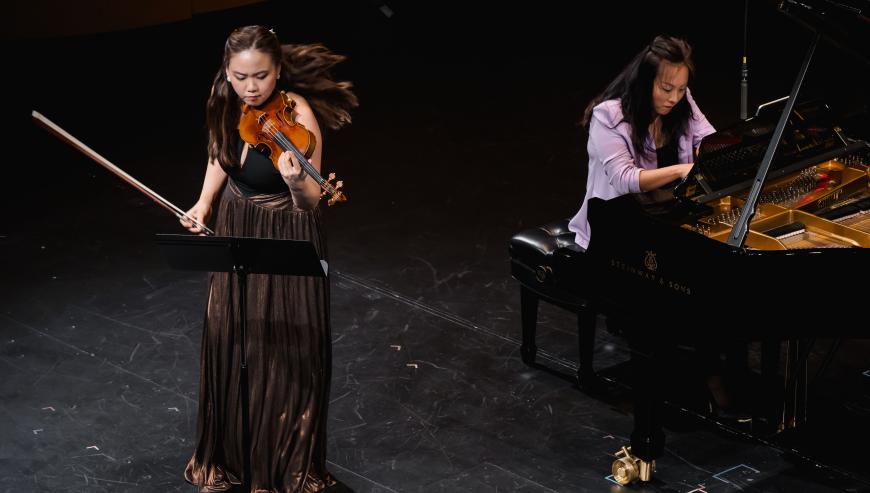
The Partita for Violin and Piano by Polish composer Grażyna Bacewicz came close to it. This 1955 work in the form of a Baroque partita — but written in a thoroughly modernist harmonic language — gave Chen a principal violin role. Boldly, she zipped her way through a stern and heavy chromatic narrative, galloping spiccato, interwoven melodies and drones, and rising glissando slides, which gave the effect of Bloch’s quarter tones running upward. Pianist Wu Qian offered plain support and joined Chen in quick and jumpy playing in the Toccata movement.
The other works on the program were far more ingratiating. A determined modernist might brush them aside as inconsequential, but that would be unjustified. These are substantive pieces that, in this performance, received all the dedication they deserve.
Only one of them is at all well known: Sergei Prokofiev’s Overture on Hebrew Themes. The ensemble that commissioned the work gave Prokofiev a notebook of Jewish melodies and asked him to use them in a piece for clarinet, string quartet, and piano. The combination of melodies and instrumentation meant that Prokofiev, probably inadvertently — for he is unlikely to have been familiar with the style — wrote one of the first classical concert pieces of klezmer music.
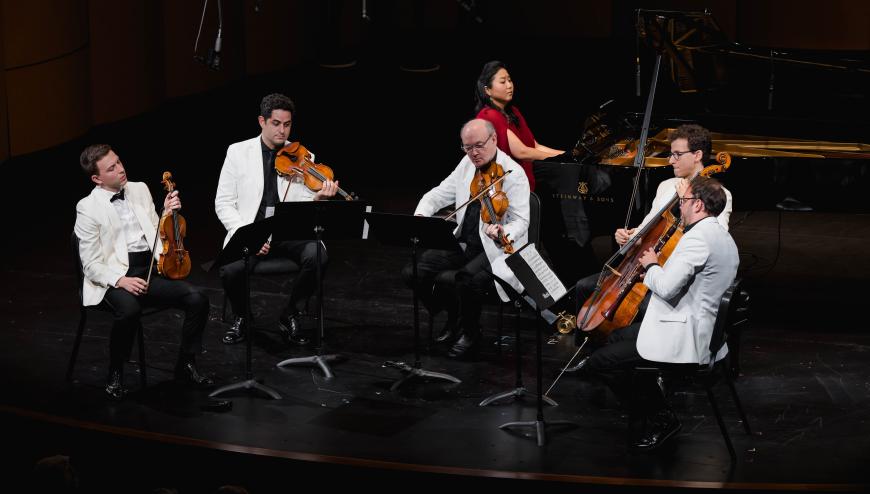
Whether the work comes across as klezmer or not depends on the performers. This time it did. The secret seems to have lain in the energetic, forward-pushing rhythm. Pianist Hyeyeon Park and cellist Nicholas Canellakis, with assistance from Neubauer on viola, kept this going. Up on the melodic end, clarinetist Tommaso Lonquich combined a stealthy approach with enough loose wailing to keep the music spicy, while violinists James Thompson and Arnaud Sussmann contributed their part to the klezmer sound.
Joaquín Turina’s Piano Quartet in A Minor, Op. 67, kept the strings — violinist Bella Hristova, violist Matthew Lipman, and Canellakis — together in lush harmonies and quiet lyric melodies, with Park’s piano interjecting counter-phrases. Canellakis had a few solos in a high strained tone. It was a pleasant work, well played but without the extroverted boldness of the rest of the program.
Darius Milhaud’s Suite for Clarinet, Violin, and Piano, Op. 157b, was more of a surprise: lively and chirpy, with touches of jazz and folk music, more substantive than one might expect from a small-scale work by the prolific Milhaud. Lonquich and Hristova traded off or matched phrases, sometimes over cadences or rhythmic patterns from Wu Qian at the piano, sometimes without accompaniment at all.


